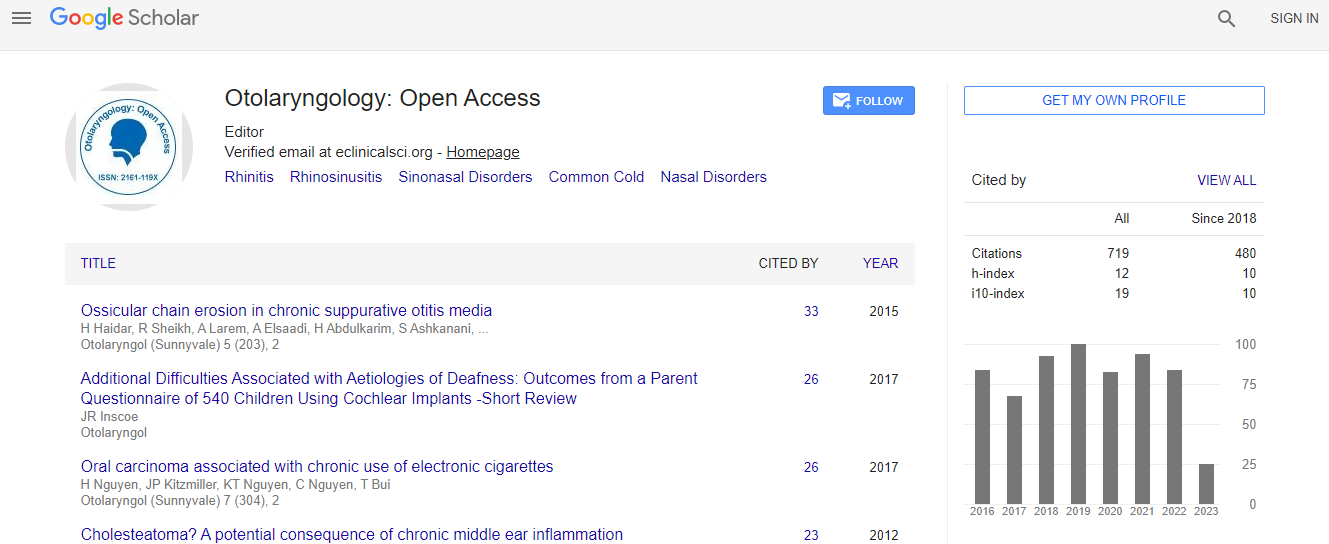Our Group organises 3000+ Global Conferenceseries Events every year across USA, Europe & Asia with support from 1000 more scientific Societies and Publishes 700+ Open Access Journals which contains over 50000 eminent personalities, reputed scientists as editorial board members.
Open Access Journals gaining more Readers and Citations
700 Journals and 15,000,000 Readers Each Journal is getting 25,000+ Readers
Google Scholar citation report
Citations : 925
Otolaryngology: Open Access received 925 citations as per Google Scholar report
Otolaryngology: Open Access peer review process verified at publons
Indexed In
- Index Copernicus
- Google Scholar
- Sherpa Romeo
- Open J Gate
- Genamics JournalSeek
- RefSeek
- Hamdard University
- EBSCO A-Z
- OCLC- WorldCat
- Publons
- Geneva Foundation for Medical Education and Research
- ICMJE
Useful Links
Recommended Journals
Related Subjects
Share This Page
Clinical implications of the nasal septal deformities
Joint Event on 4th European Otolaryngology-ENT Surgery Conference & 3rd International Conference on Craniofacial Surgery
Marin Subaric
University North in Varazdin, Croatia
Posters & Accepted Abstracts: Otolaryngol (Sunnyvale)
Abstract
The first attempts to systematize septal distortions have been given by Cottle who defined four groups of septal deformities: subluxation, large spurs caudal deflection and tension septum. Fortunately, the variations of the nasal septal deformities show a certain order, thus enabling more precise classification. Mladina was the first to make user-friendly classification of nasal septal deformities in six basic types. He also described the seventh type, named “Passali deformity”, which presents individually, but always well-defined combination between some of the previous six types. Mladina types of nasal septal deformities (NSD) are divided in two main groups: so called “vertical” deformities (types 1, 2, 3 and 4), and “horizontal” ones (types 5 and 6). This classification was immediately well accepted by rhinologist’s world wide and started to be cited from the very beginning. Since then it has been continuously cited increasingly more often, thus making Mladina classification a gold standard whenever clinical researches on nasal septum are concerned. More than fourteen clinical studies based on this classification have been published so far. It is extremely important to be familiar with the particular types of NSD since every single of them plays a specific role in the nasal and general pathophysiology in man. To know the classification have the importance also from the forensic point of view: the court expert witness has a great chance and possibility to make a reliable and sustainable finding for the court needs.Biography

 Spanish
Spanish  Chinese
Chinese  Russian
Russian  German
German  French
French  Japanese
Japanese  Portuguese
Portuguese  Hindi
Hindi 
